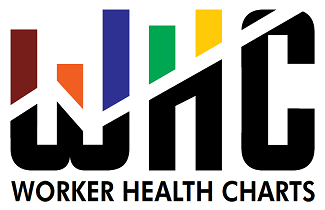
Elevated Blood Lead Levels Charts
Adult Blood Lead Epidemiology & Surveillance (ABLES)
Data Source
Adult Blood Lead Epidemiology & Surveillance (ABLES)
The program objective is to build state capacity to initiate, expand, or improve adult blood lead surveillance programs which can accurately measure trends in adult blood lead levels (BLL) and which can effectively intervene to prevent lead exposures. In 2015, NIOSH designated 5 µg/dL (five micrograms per deciliter) as the reference blood lead level for adults. Therefore, an elevated BLL is defined as a BLL=5 µg/dL. Currently, data on BLL=10 µg/dL and BLL=25 µg/dL are available and provided here. For more information see ABLES Data.


